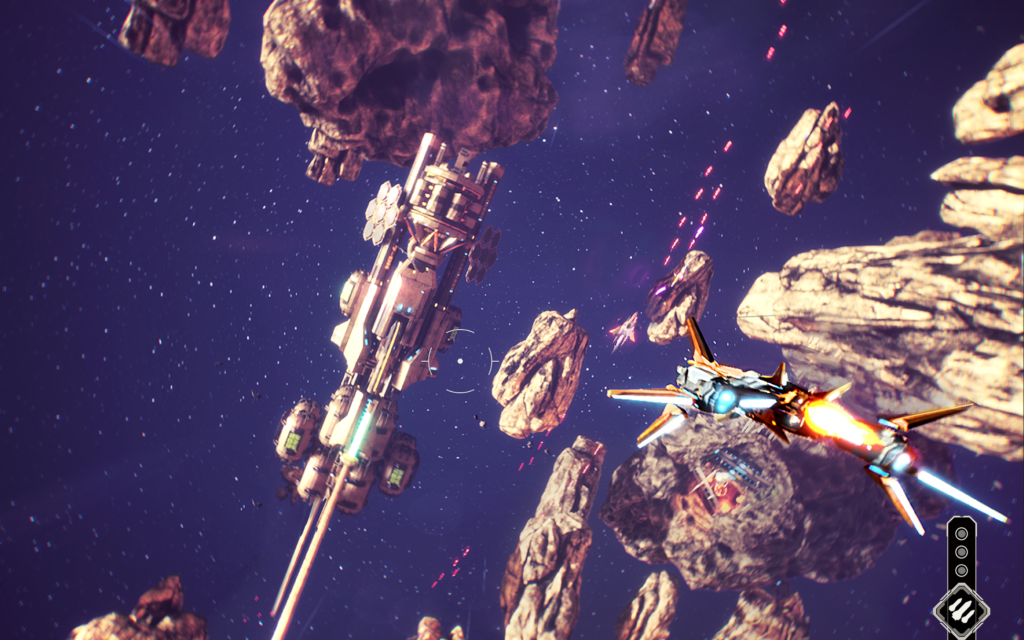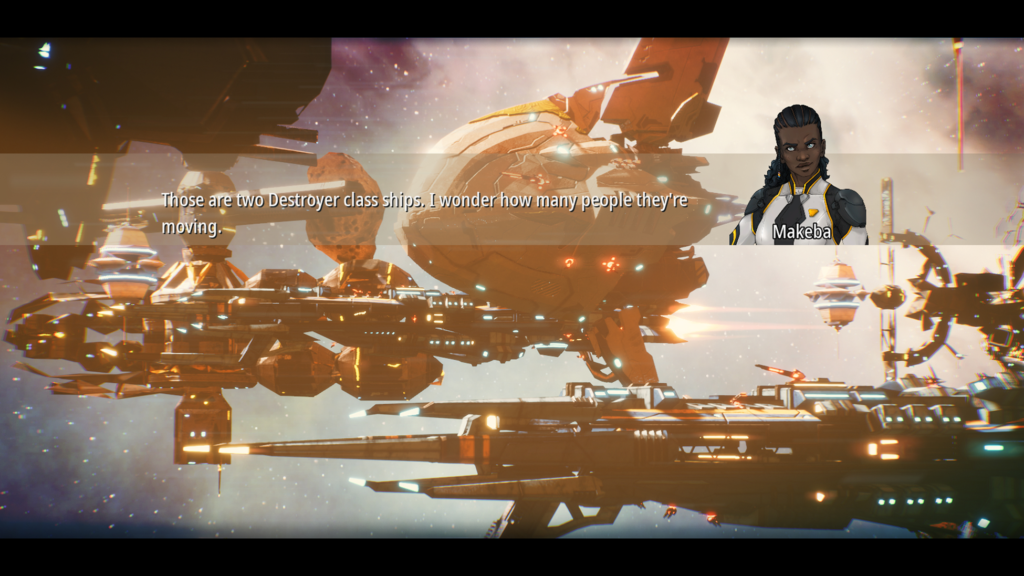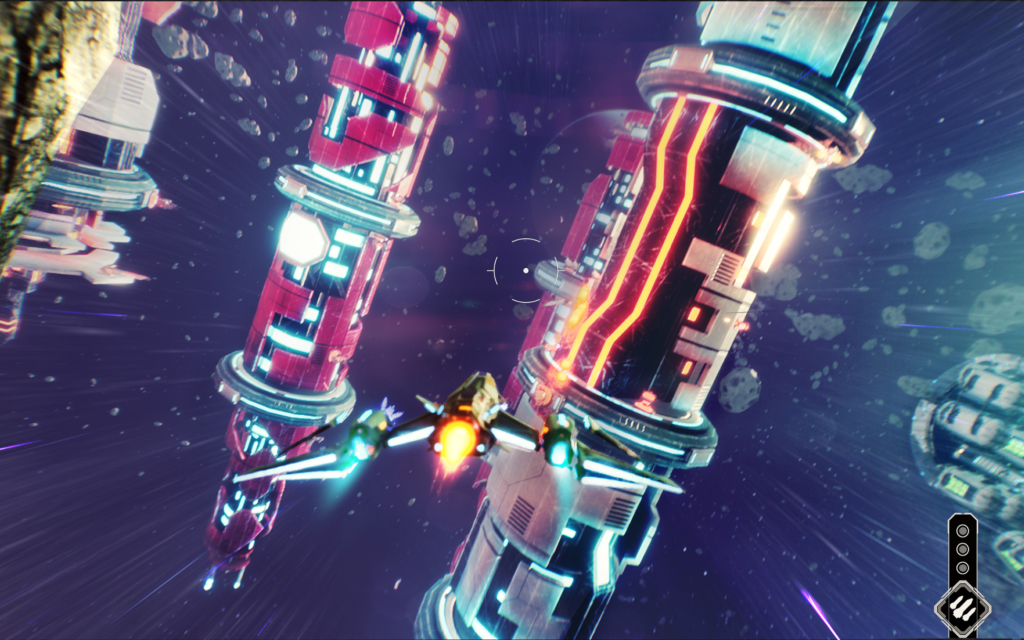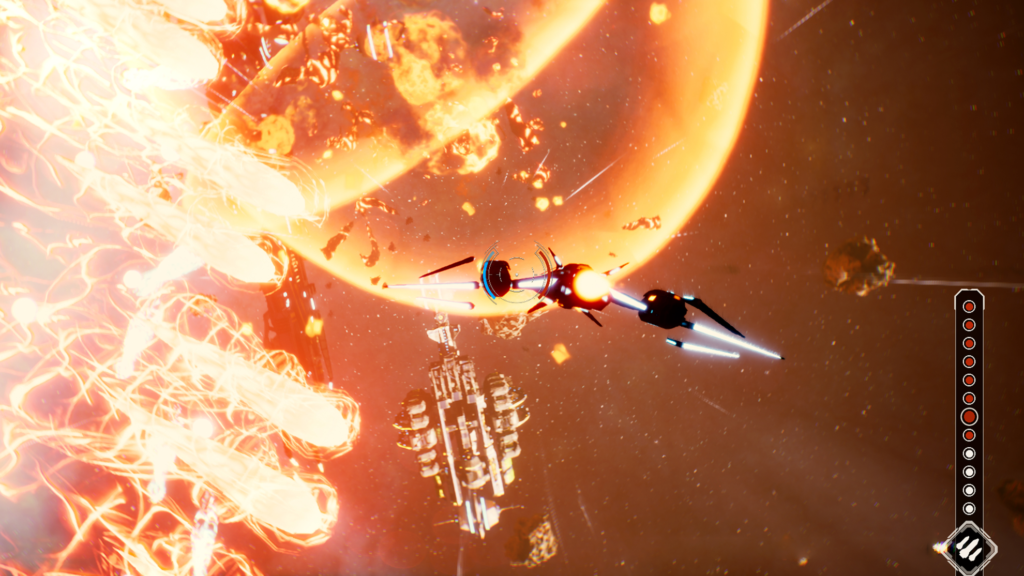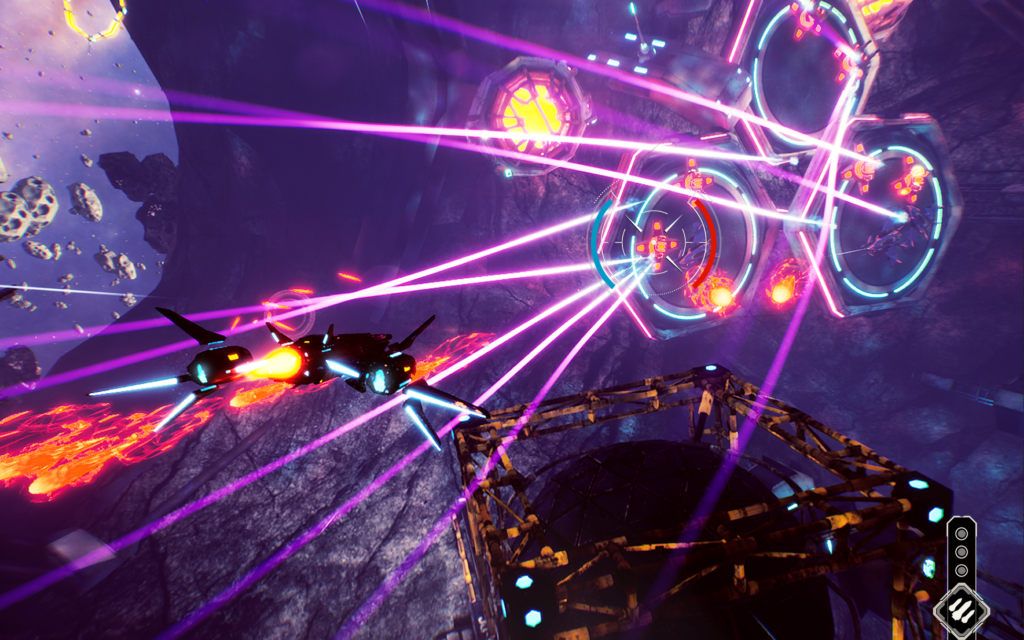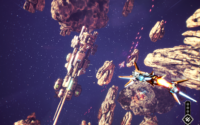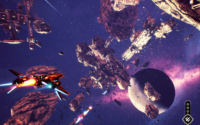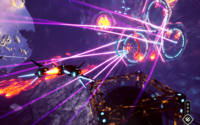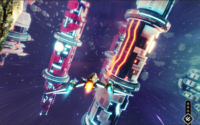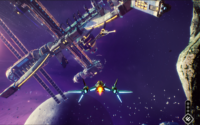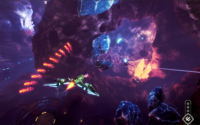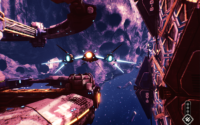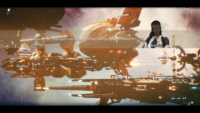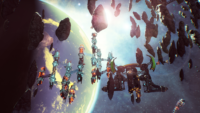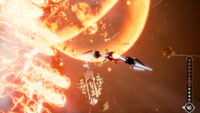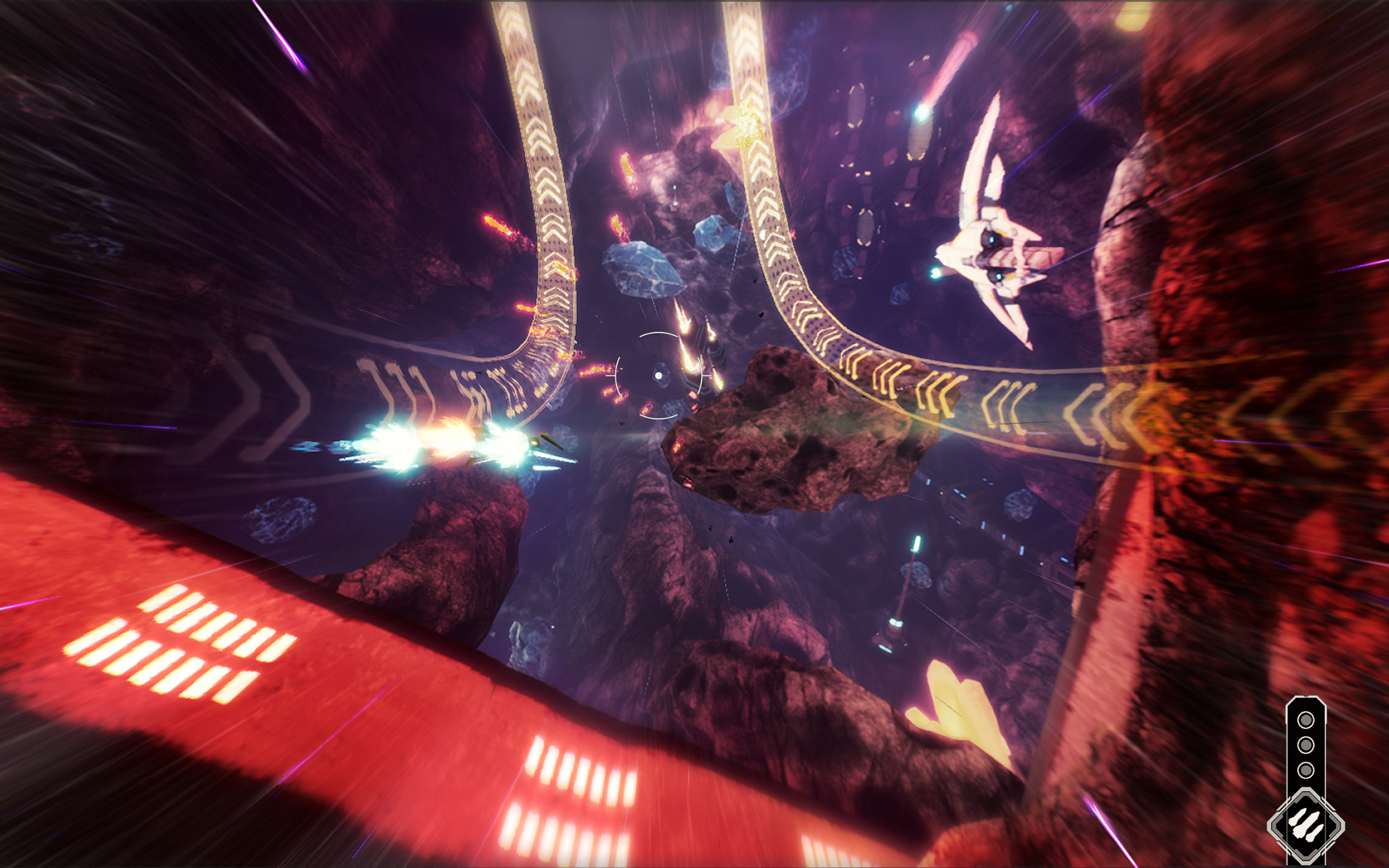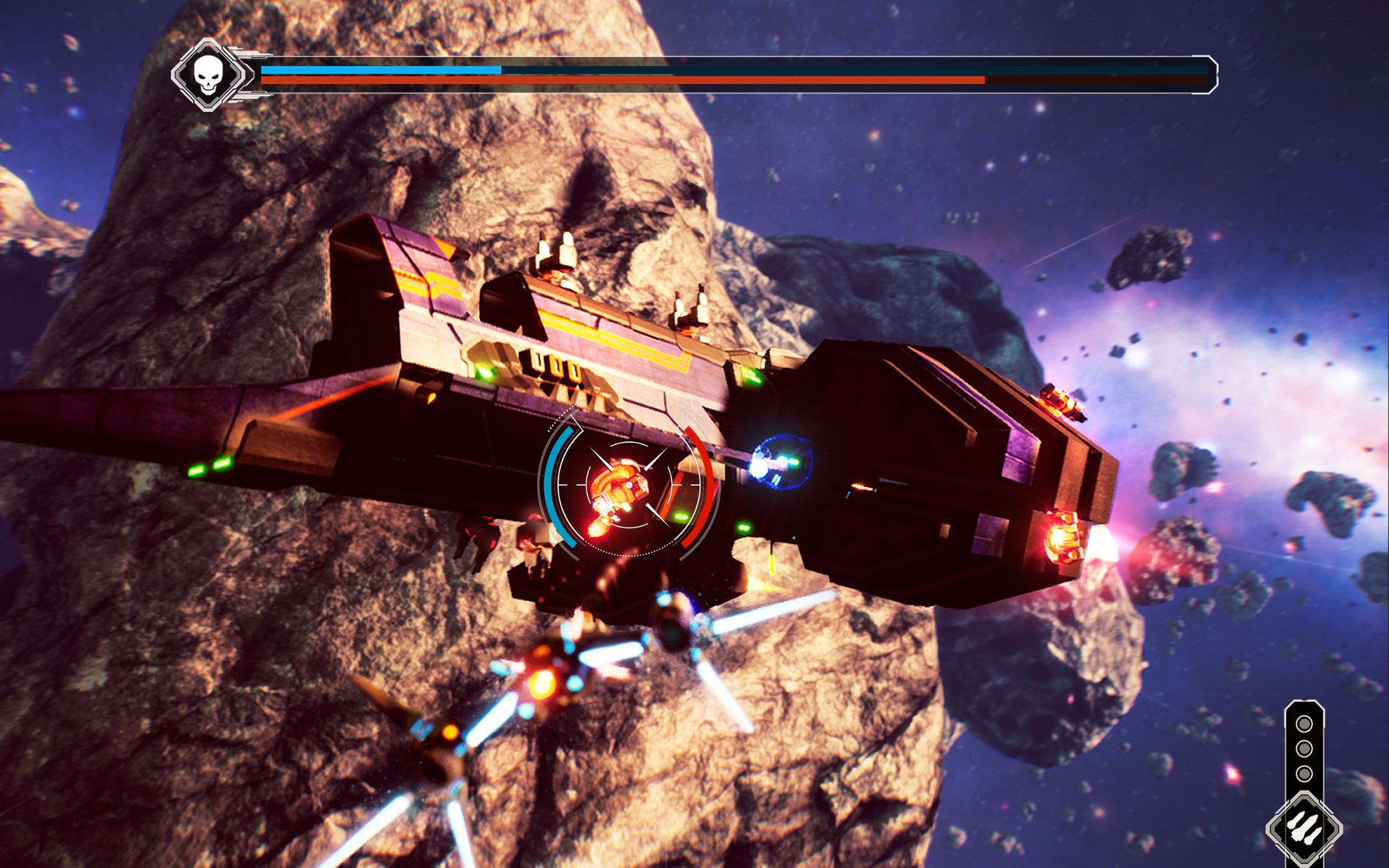Game: “Redout: Space Assault”
Redout: Space Assault

In a world where games are becoming ever more expansive and free roaming, starting a new title can be a little daunting; not knowing where to go or what to expect – sometimes it’s nice to be given a little direction. That’s where Redout: Space Assault, the latest on-rails space shooter from 34BigThings, swoops in to save the day. We jumped in the cockpit, powered up the thrusters and blasted off into the year 2395 to give you an idea of what to expect!
At A Glance
| Visuals | 7 / 10 |
| Sound | 8 / 10 |
| Gameplay | 6 / 10 |
| Overall | 6 / 10 |
| Positives | + Stylish visuals and a fantastic soundtrack |
| + Diverse cast of characters with convincing voice-acting | |
| + Good mix of mission types to keep things interesting | |
| Negatives | – Action is framed, limiting how much of the screen you can shoot at |
| – Allowing unlimited deaths within a level lessens the challenge | |
| – Despite some variation in mission objectives, things become a little rinse-and-repeat |
Moving away from the futuristic racer format of the original game, Redout: Space Assault takes the form of a single-player on-rails shooter. The newest installment is a prequel chronicling the adventures of Leon Barret, a skilled fighter pilot working for Poseidon Security Services, helping forge humanity’s way to Mars in order to colonise the Red Planet. You’re charged with fighting off pirates and rebel forces who are attempting to steal valuable assets required for the relocation effort when things take a bit of an ugly turn and allegiances are tested.
After a no-nonsense introduction, initial impressions are great – the environment visuals look good and are complemented by polished ship designs, nice lighting and explosion animations; a minimalistic HUD allows maximum enjoyment in through your eyeballs too, which is a nice touch. Building on the strong showing from the original Redout, the fast-paced electro-soundtrack slaps, helping to establish a strong feeling of danger and speed as you blast through enemy squadrons and weave between clusters of asteroids. As a Star Fox lifer, I found the default controls a little backwards, but after a quick remap of the buttons I was comfortably swooshing my Super Orbital Recon Fighter around like an Arwing. Happy days.
I was immediately struck by the diversity of the characters in Redout: Space Assault, with two black pilots leading the way (Leon and Makeba), and a myriad of peripheral characters from various parts of the world as well. The voice acting, whilst mostly limited to a snippets of conversation before and after each level is very well done, and I found myself connecting with the cast of characters through their performances. There’s a real human element to this story, filled with passionate personalities who have concerns beyond the boundaries of the playable levels which isn’t often accomplished in this genre.
And speaking of breaking genre norms, I was pleased to see some serious topics touched on in the plot of Redout: Space Assault, rather than the mindless blast ‘em up fodder that players are usually subjected to. There’s a strong sense of morality to the story without ignoring the shades of grey in between, so even if the core plot points are visible a mile away, you’re given a story that’s enjoyable to play through thanks to the characters within it even if the story itself is rather predictable.
After playing for a little longer, the early shine does begin to tarnish a little. The textures can render slowly, working to spoil the well designed environments, and the static reticle makes it really tricky to fire at enemies whilst dodging at the same time. As there’s no way to steer the nose of the ship you cannot angle your shots, and so the only way to shoot at enemies is to get head on with them – this inevitably leads to you playing chicken with oncoming fire, where timing your dodges is awkward due to the depth of the camera angle. Another gripe is how the action was framed significantly to the centre of the screen, with a large invisible border keeping your ship from flying to the edges and corners of the screen. Perhaps with a different camera perspective this wouldn’t be such a problem but playing on a small Nintendo Switch screen in handheld or table top mode meant that you had very little room to manoeuvre.
As with any on-rails space shooter released on a Nintendo console, Redout: Space Assault will inevitably be compared to Star Fox, but in truth the two games are quite different examples of the genre. Rather than have extended levels with a more cinematic feel, 34BigThings have opted for much shorter, arcade-like levels where the goal is very clearly defined before you begin.
Each mission has a main objective that must be completed in order to access the next level, and a number of optional objectives which will reward you with credits for use later on. And your main objective isn’t always as simple as ‘survive until the end’ either, with a few different level types thrown in to keep you on your toes. There are, of course, the on-rails blast ‘em up levels but you’ll also have a number of larger scale exploration forays, mega-ship boss encounters and a few throw-back Redout-style race levels too. At the end of each mission you’re also offered a choice of upgrade cards that offer bespoke bonuses to your ship whilst you have it equipped. As you complete each level you’re offered the choice to keep your chosen card or swap it for a new one, granting an extra level of customisation – it’s a fun mechanic that really lets you tailor your ship to your playing style.
The attempt at bringing some variation ultimately meets with mixed results though, as none of the mission styles really hit home to any great degree. The on-rails levels appear frantic, with enemy ships sweeping in and out with your field of vision to level waves of laser beams and missiles at you. While all this gunfire really adds to the excitement of the short arcade levels, having infinite lives and no real ‘game over’ mechanic killed any real sense of challenge in any level where ‘survive’ wasn’t the main objective. I also found that the levels weren’t quite as hectic as they first appear and that the music really drove the sense of excitement as you play, rather than the onscreen action – though in truth, that’s more of a compliment to the soundtrack than it is an indictment of the gameplay.
The exploration levels definitely offered the greatest potential for enjoyment, with the fighter feeling the most responsive in this mode and allowing you the chance to take a more in-depth look at the Redout universe. Unfortunately these levels mostly revolve around ‘seek and retrieve’ objectives, and with only a rudimentary echolocator to help you it was easy to fly around these levels for a few minutes with no idea where to go. Even worse than being lost was when you accidentally flew out of bounds, destroying your ship and costing you all of the loot you’ve accumulated throughout the level which proved infuriating.
Sadly, the boss levels too are somewhat lethargic; while jinking around a massive spaceship in your tiny fighter is a cool visual, there’s very little action and they’re more a test of patience than a test of skill. The racing levels certainly offer a more hectic pace but essentially boil down to flying through a series of rings at breakneck speed, and with no indication of whether you’re winning the race or not, it can be rather frustrating to reach the finish line to find out you have to do it all over again.
Between levels there’s a cool ship customisation feature that allows you to choose from some sweet paint jobs for your fighter, as well as an upgrade system that allows the player to spend in-game currency to upgrade your ship. You have the option to improve various aspects of your fighter, from the firepower of your weapons, the strength of your hull and the sturdiness of your shields. While I loved the idea here, it all came across as a little ‘smoke and mirrors’ – bogies seemed to ramp up at the same rate as your ship meaning that you never really felt any more powerful than you did in the level before. Perhaps if I went back and played through the earlier levels again with my souped up ship I might feel differently, but on a single play through it all felt a little redundant.
Ultimately, while I enjoyed Redout: Space Assault, I can’t proclaim to have loved it; the visuals, soundtrack and voice acting gave me plenty to smile about but there’s a rinse and repeat feel to the levels that make it difficult to describe as ‘must buy’. The game comes across as being a little bipolar, neither fully offering the frantic shoot ‘em up experience of an arcade title or the more fleshed out mechanics of something more substantial. It straddles a strange middle ground that, while enjoyable, sadly does not wholly succeed in either camp.
In the interest of full disclosure, the publisher provided VGamingNews with a copy of the game in order to conduct this review.


